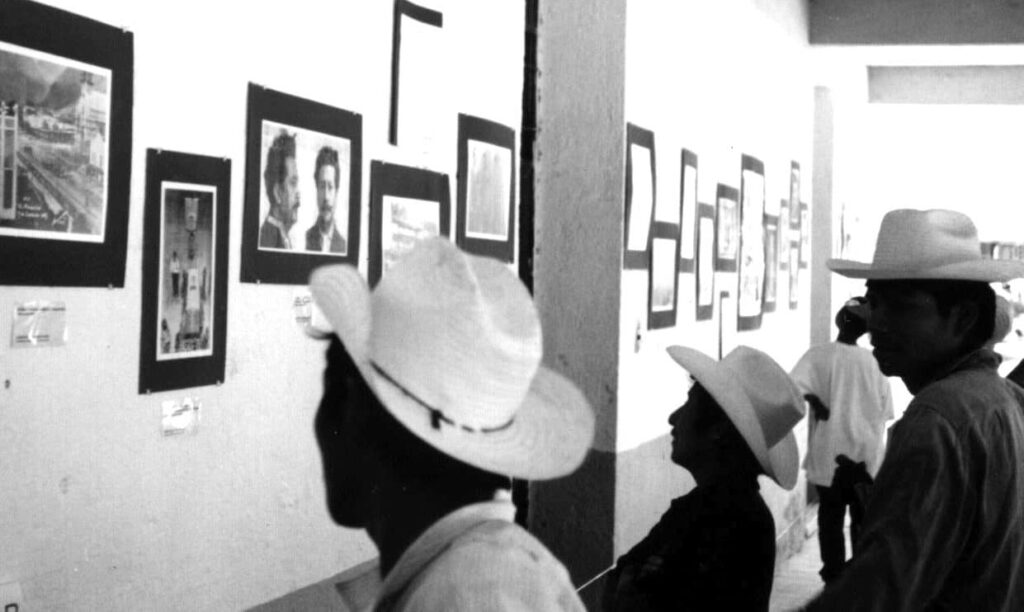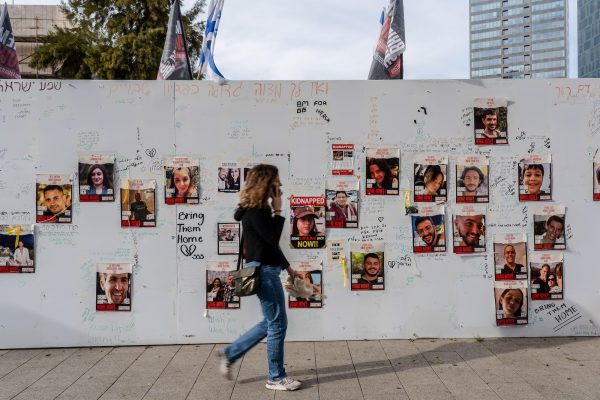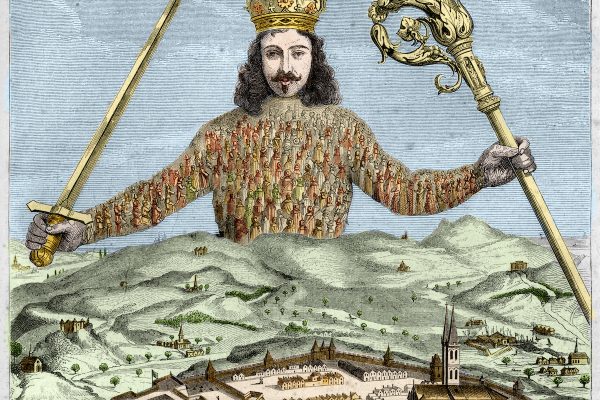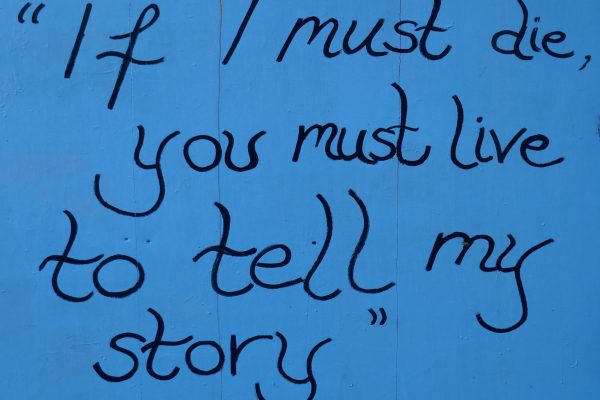Bad Mexicans: Race, Empire, and Revolution in the Borderlands
Kelly Lytle Hernández
W.W. Norton & Company, $30.00 (cloth)
In 1904 Ricardo Flores Magón, Mexican radical and Partido de Liberal Mexicano (PLM) founder, fled north of the Mexican border to escape persecution in his home country and grow the movement that would spur the Mexican Revolution. He would spend most of his life thereafter as a borderlands fugitive, despite a brief stint in Canada after an arrest in 1905. He evaded another arrest the following year in El Paso, where he had traveled to join the PLM before eventually leaving for Los Angeles. Even after Flores Magón escaped to California, El Paso continued to house other magonistas, followers of Flores Magón and the PLM, and to serve as a hub of some of the organization’s most important publications and battle plans.
Regeneración, the PLM newspaper, was one of four anti-Díaz Spanish-language newspapers circulating in El Paso in 1906. At that time there were so many impoverished Mexican workers living in the city that PLM member Rómulo Carmona calculated that one could recruit 5,000 or more people in one or two days for the magonistas’ cause. The veracity of Rómulo Carmona’s claim that thousands of people in El Paso (or any other city north of the border) were available for PLM recruitment is unclear. Historian Kelly Lytle Hernández, for one, contends that the magonistas numbered no more than a few thousand people. Although they “primed Mexico for revolt,” they found few local followers when they began to wage actual military attacks in 1911.
Still, Antonio Lomelí, the Mexican Consul in El Paso, agreed with Carmona, writing to Díaz loyalist Enrique Creel in January 1911, “we don’t have a single sincere friend here.” Lomelí penned that warning just months before the pivotal Battle of Juárez. El Pasoans watched the battle as if it were a sporting event, picnicking on the banks of the Río Grande and spectating from the roofs of hotels, businesses, and the city’s train station. As David Dorado Romo’s Ringside Seat to a Revolution (2005) captures, stores sold field glasses and commemorative spoons, and hotels offered taxi rides across the border for those who wanted a closer look. El Paso merchants fueled the battle by selling ammunition, uniforms, and shoes to Pancho Villa, a general in the Revolutionary Movement. In fact, Villa was such a valuable customer that when a train carrying payroll for his soldiers was detained, department store owner Alfred Schwartz loaned him $50,000 to keep them paid.
The Mexican population in El Paso grew exponentially between 1910 and 1916, from approximately 9,000 to nearly 33,000, as Mexican refugees, impacted by the Revolution, fled north. The refugees included not only the poor but also, by one city newspaper’s estimation, “tens of thousands of Mexicans of the best classes,” leading El Paso to displace “San Antonio, New Orleans, St. Louis, New York, and Los Angeles [as the] formerly dominant capitals in the mind of the average welltodo [sic] Mexican.” By World War II, U.S.-born people of Mexican heritage, the children and grandchildren of post-Revolution migrants, outnumbered the foreign-born in El Paso for the first time. The city, like the rest of the borderlands, was changed by the anarchists and socialists who made the Revolution possible, even as many of the effects—including an expanded Anglo elite class and the increased suppression of Mexican Americans—directly conflicted with the magonistas’ goals.
This is the argument that Lytle Hernández makes in her new history of the magonistas, Bad Mexicans (2022). The core of her argument is that the Mexican Revolution literally “changed who we are as a people,” as the migration it engendered laid the foundation of today’s Mexican American population. The magonistas rebelled against the Díaz administration’s policies, which catered to American industrialists who exploited and even terrorized Mexican workers on both sides of the border. The PLM spearheaded these protests, outraged at the fact that wealthy Mexicans and Americans profited while peasants starved and Díaz rigged elections to stay in power. With over forty PLM focos, or local cells, in Mexico and the United States, primarily concentrated in Texas and Arizona, the organization became a transnational project. In both cause and effect, Lytle Hernández argues, the story of the magonistas is as much a part of U.S. history as Mexican history.
The story of the Mexican Revolution is rooted in U.S. greed. Through the 1883 Land Reform Act, Díaz auctioned off many of Mexico’s natural and material resources to Gilded Age titans including J.P. Morgan, Russell Sage, the Guggenheims, the Hearsts, and the Rockefellers. They extracted oil, minerals, and rubber and invested in agriculture, transporting their mined resources to the United States via the Mexican railroad (which they owned). Meanwhile, Mexican workers and the nation’s indigenous population struggled under debt peonage. Flores Magón proclaimed the Díaz administration a “den of thieves,” but Lytle Hernández underscores that the den was underwritten by U.S. imperialism.
Americans and U.S. geography were also central to the magonistas’ survival. The U.S. police and political officials constantly pursued the Flores Magón brothers and other leaders of the PLM (they called themselves La Junta)—including Juan Sarabia, Librado Rivera, Lázaro Gutiérrez de Lara, and Práxedis Guerrero—forcing them to remain constantly on the move. San Antonio, El Paso, Los Angeles, and St. Louis are four of the most important U.S. cities in which PLM rebels hid, organized, wrote, and published, often with the aid and assistance of socialists and anarchists who lived in the United States. Some, including Jovita Idar, Mother Jones, and Emma Goldman, are familiar to many. Lesser-known elites, such as lawyer Job Harriman and socialite Elizabeth Trowbridge, used their wealth and professional expertise to support the movement. But most supporters were anonymous miners and migrant laborers who shared the magonistas’ economic beliefs.
People are not the only protagonists in Lytle Hernández’s narrative. Regeneración, founded in 1900 by the three Flores Magón brothers, Ricardo, Enrique, and Jesús, was one of 450 Spanish-language newspapers in the United States between 1890 and 1930 that transported information across national borders. Though it was far from the only anti-Díaz newspaper, it was nonetheless distinctive. From the first issue published in the United States in 1904, it united magonista supporters in the United States and in Mexico, reaching 20,000 readers (including Emiliano Zapata) and focusing on a series of platforms for ending the Díaz regime and redistributing land to the people who worked it. Even as Flores Magón’s views grew increasingly anarchist, the paper remained firmly socialist in tenor. Amongst Regeneracion’s greatest accomplishments was Flores Magón’s willingness to compromise his ideas for the sake of the newspaper’s broader appeal.
Letter writing was a primary tool PLM leadership used to communicate across state and national borders—it was also their greatest source of vulnerability. Mexican and American vigilante forces sought to locate, prosecute, and persecute them by tracing their letters, even as the magonistas wrote using frequently changing codes and ciphers. Some of the most important information about them was collected by St. Louis private detective Thomas Furlong, who convinced the U.S. Post Office to intercept and copy the contents of PLM mail. Lytle Hernández illustrates how even this seemingly innocuous government institution was instrumental to imperialism. “Everywhere U.S. settlers went, the U.S. Post Office followed,” she writes. Once Flores Magón realized that his letters were tipping off Furlong and other surveillance workers, he quit writing, “sheathing his greatest weapon.”
The Post Office was just one piece of a larger network of spies, police, federal workers, and judges that were necessary to capture and obstruct the magonistas. Each of these elements, including the Díaz regime’s often successful transnational surveillance of the magonistas, was mobilized by the U.S. federal government’s desire to protect U.S. economic interests in Mexico. When Díaz, responding to growing internal discord, began to curb American interests in 1908 by taxing foreign assets and nationalizing the railroad, he lost U.S. support. He was given no option; he could no longer contain the sentiments that the magonistas had popularized.
“Bad Mexicans” is a moniker that Díaz and his loyalists often used to characterize the magonistas, but the book illuminates how deeply Anglo America believed all Mexicans to be dangerous and degenerate. In describing this history, it foregrounds how growing U.S. vigilantism and racial hostilities matched the political hostilities of Díaz’s Mexico. The Border Patrol, the focus of Lytle Hernández’s 2010 book Migra!: A History of the U.S. Border Patrol, was still two decades from formation when Flores Magón left Mexico. But Bad Mexicans still chronicles a web of policing organizations that spanned from the Texas Rangers to local sheriff offices to the Bureau of Investigation (the predecessor to the FBI) and that anticipates the formal, federalized militarization of the border. Much of the drama of Bad Mexicans results from the magonistas’ successful efforts to elude these organizations, even as they were ultimately undone by them. But there is an undercurrent of racial violence that goes beyond a political cat-and-mouse game.
Lytle Hernández captures the precariousness of the vigilante situation in describing the case of a 1906 copper mine strike in Canacea, Sonora, just south of Douglas, Arizona. When the strike turned deadly, the U.S. Secretary of War sent troops to the border without Díaz’s permission. Likewise, the Arizona Rangers took it upon themselves to ride down to Canacea, turning away only once the Mexican Army forced them to do so. In Canacea, as in other incidents, there existed a foreboding threat of white power and violence that was echoed in the lynchings of Mexicans and Mexican Americans that Regeneración, like other borderlands publications, exposed.
Though Bad Mexicans contains many characters, the book centers on Flores Magón, a flawed hero. Lytle Hernández writes admiringly of his commitment to rethinking entire systems of politics and labor, and she makes clear that his confidence in his own ideas served as both a strength and the source of his eventual downfall. Though he possessed a capacity to imagine broad change and inspire others to imagine it, he lacked the ability to conceptualize a pragmatic system that could bring about his vision. A contemporary described him as “not the very smartest of the group” of dissident journalists he associated with, but “the prototype of the apostle” who possessed “a character of iron.” It was not his only flaw. When Flores Magón made his way to the borderlands, an assembly of women journalists, particularly Jovita Idar, were already documenting violence against Mexican Americans. She and her family helped Regeneración to gain greater readership. María Brousse, who would eventually become Flores Magón’s common-law wife, hid him when he first arrived in Los Angeles and helped to transport his mail. And yet, Lytle Hernández notes, he and other PLM leaders, “despite years of working with anarcho-feminists . . . tended to relegate revolutionary women to secondary roles.” In this sense the magonistas mirrored many twentieth-century U.S. social movements.
Flores Magón died alone in Leavenworth Penitentiary in 1922, estranged from most of La Junta and having spent most of the revolution in prison. Readers anticipate this outcome as they hear of his fall out with other PLM members, from Camilo Arriaga to Antonio Villarreal, as his own politics grew increasingly militant and anarchist. His inability to concede, partnered with his cruelty and a willingness to soil the reputation of anyone who disagreed with him, meant he could only be a leader for people on the social and political margins. By contrast, many of the other leading figures in the book returned to Mexico to serve in the short-lived Madero administration. That Flores Magón died in one of the most infamous U.S. prisons, cut off from the movement that he started, punctuates much of Lytle Hernández’s reading of the magonistas.
The story of the magonistas, Lytle Hernández tells us, is one that historians “have been chronicling . . . for decades,” even as Latino history remains “shunted to the sidelines of U.S. history, [leaving] only the few students lucky enough to take specialized courses . . . to learn what the PLM, and histories like theirs, can tell us.” Indeed, the many socio-political topics that intersect PLM history—including the history of U.S. socialism, political radicalism, and labor history—are marginalized in U.S. history instruction and make this story difficult to access. This argument, as much as the history it tells, is one of the book’s central contributions. Lytle Hernández’s calls for inclusion are especially significant for secondary students, where access to specialized Mexican American studies courses has been linked to heightened student engagement and improved high school graduation rates and college entry. Yet recent culture wars against schools and critical race theory have made access to Latinx history courses an even more challenging project for public schools to offer. This only makes the inclusion of the magonistas’ story in U.S. history courses more urgent.
Lytle Hernández’s argument for teaching U.S. history as bound to and shaped by Mexican and Mexican American history is in many ways anticipated by the people we meet in Bad Mexicans. As a licensed teacher, recognized journalist, and PLM supporter, Jovita Idar helped to found escuelitas, schools designed by and for Mexican Americans in Texas. These schools, as Philis Barragán Goetz documents in Reading, Writing, and Revolution (2020), taught Mexican American children, marginalized and neglected by segregated Texas public schools, bilingual literacy skills as well as Mexican history and culture. In developing the antecedent of today’s Mexican American studies, Idar and others sought to empower young children to bring about a more just society—to transform word into deed, as Lytle Hernández argues Flores Magón was unable to do. Figures like Idar, Bad Mexicans suggests, challenge readers to think fully and strategically in the face of political forces that seek to quash democracy and dissent. Flores Magón, by contrast, offers a cautionary tale against reducing legitimate social critique into inflexible ideology.
Rather than casting Latinos as “immigrants, outsiders, or newcomers to the American story,” Lytle Hernández contends, history teaching should treat them as “major players in U.S. history.” Yet there is even more involved here than representation. Translating the story Lytle Hernández tells into the classroom setting requires students to locate their relationship to history, regardless of who they are. Undoubtedly, her challenge requires us to see the magonistas not just as people who performed their work within U.S. borders, but to understand that work as situated within, interactive with, and impactful on the nation in which Flores Magón would live the rest of his life and in which most of Lytle Hernández’s readers live theirs.
The United States works as both problem and setting in Bad Mexicans, but it is difficult to get a clear grasp of the many locations where the book sets most of its action, both in terms of their people and their social fabric. This is an important issue in a book that frames the history of the Mexican Revolution as spurred by and influential on the United States. Cities such as El Paso, Laredo, and San Antonio make for intuitive choices for the magonistas to set up shop, even to readers who know relatively little about them. But a reliance on supposition can flatten the importance of individual sites and the unique dynamics of the people who live in them.
Take, for example, St. Louis. The city stands out because it is not in the “borderlands,” but the magonistas still spent a great deal of time there and published Regeneración from it. Lytle Hernández writes, “Why the Mexico City journalists chose St. Louis is not known.” It was an odd choice, she recounts, because “few Mexicans lived in the city” (though enough to warrant a Mexican consul who would play a key role in seizing information on La Junta), and because of the recent 1904 World’s Fair, a spectacular “national tribute to white supremacy and U.S. imperialism.” It was also an industrial center, as she notes, that had a Socialist Party of America chapter in every ward. Each city featured in the book suggests its own promise: unique ideas and people that made it possible for the magonistas to live and work there, however hostile the circumstances and conditions, in a way they could not have in Díaz’s Mexico.
Bad Mexicans seeks to tell a binational history. Readers of this book might leave wanting to know more about how the magonistas influenced local populations, but they can consult many of the rich studies that Lytle Hernández cites in her notes. It is precisely because of the argument this book puts forth—that the magonistas changed who we are as a nation—that we should consider this history as an American story. For this, we must understand how ordinary people from both dominant and marginalized groups in the United States held a stake in the magonistas’ work and how the magonistas were influenced by the places they inhabited. The history of the magonistas is a tale of heroes, antagonists, and networks of power. However, as Bad Mexicans shows us, it is also a story of everyday, local acts of resistance that offer us lessons about ourselves.






